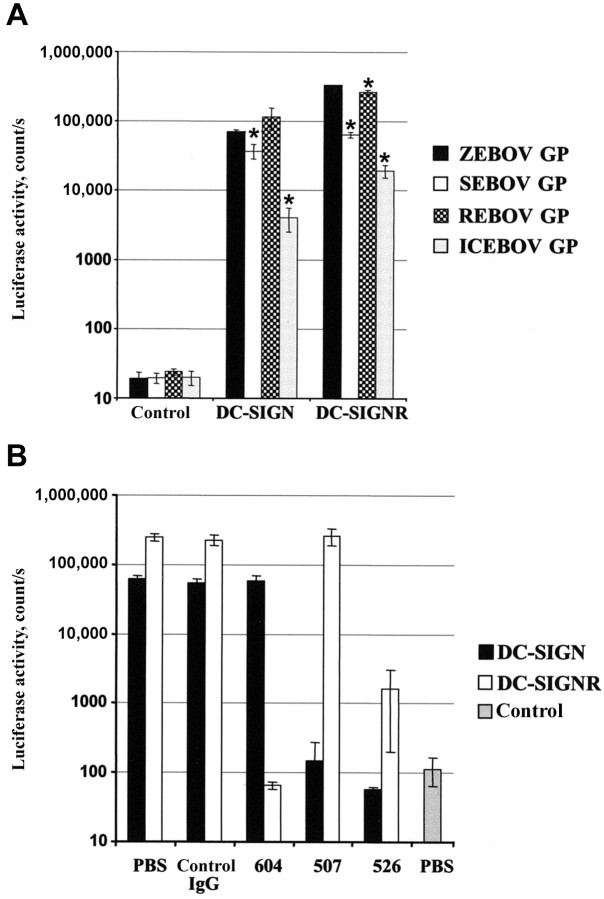Figure 1.
DC-SIGN/R (calcium-dependent [C-type] lectins DC-SIGN [dendritic cell-specific intercellular adhesion molecule 3-grabbing non-integrin]/CD209 and its homologue, DC-SIGNR/L-SIGN/CD209L, taken collectively) promote Ebola virus (EBOV) glycoprotein (GP)-driven entry into B-THP cells. A, DC-SIGN/R augment infection of B-THP cells with reporter viruses bearing the GPs of the 4 subspecies of EBOV. B-THP cell lines stably expressing DC-SIGN/R were infected with infectivity-normalized reporter viruses bearing the indicated EBOV GPs. Three days after infection, luciferase activities in cellular lysates were determined. A representative experiment is shown. Error bars denote SDs. A t test (2-tailed) for independent samples was used for statistical analysis. Asterisks denote values significantly different from those measured after Zaire EBOV (ZEBOV) GP-driven infection of cells expressing DC-SIGN and DC-SIGNR, respectively (*P ⩽ .001). B, EBOV GP-mediated infection of B-THP DCSIGN/R cell lines is lectin dependent. B-THP cell lines were infected with ZEBOV GP-bearing reporter virus, and infection efficiency was quantified as described above. However, before infection, the cells were incubated with the indicated antibodies (10 µg/mL). Monoclonal antibody (MAb) 604 is specific for DC-SIGNR, MAb 507 binds DC-SIGN, and MAb 526 recognizes both lectins [25]. A representative experiment is shown. Error bars denote SDs. ICEBOV, Ivory Coast EBOV; REBOV, Reston EBOV; SEBOV, Sudan EBOV.

